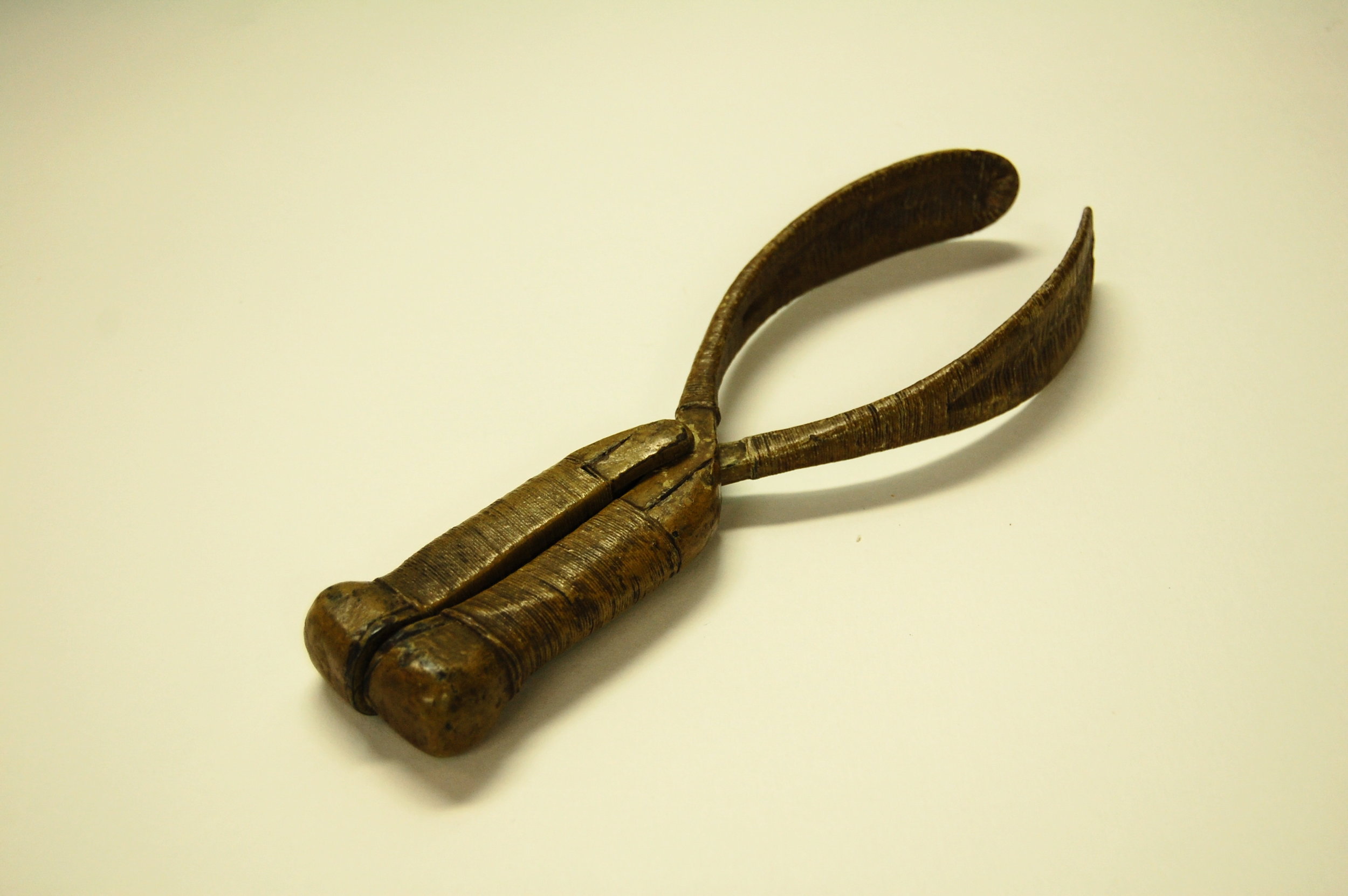

Unlike modern day obstetrical forceps, these forceps are made from wood, wrapped in natural leather and coated with animal lard (most likely hogs). They are an early design of obstetric forceps with two blades that cross at the mid point. Obstetric forceps have not changed drastically since this model, with the mid point cross and curved blades recognisable in todays designs. Forceps are used in obstructive births in an attempt to maintain the health of the mother and the baby. The use of forceps to aid delivery of a baby is generally considered to be safer than the mother having a caesarean section or ventouse birth.
Obstetric forceps comprise of two blades that are positioned around the head of the fetus during childbirth. Forceps can be used with a fixed lock mechanism to prevent rotation when applied, or with a sliding lock mechanism that allows the baby to be rotated once gripped by the forceps. These forceps have neither lock mechanism. The inward curve allows for the fetus to be grasped and held onto with enough grip to assist the baby but not so much as to cause injury.
The invention of forceps is attributed to surgeon Peter Chamberlen (c.1560-1631) in the 17th Century. Chamberlens instrument first appeared in England and Scotland in 1735. William Smellie (1697-1763), a famous British obstetrician pioneered the evolution and proper use of the forceps in England. Smellie added an English lock and fenestrated blades (unlike this very early pair) to the existing design by Chamberlen. Later designs were longer with a pelvic curve based on scientific study of pelvic measurements. This resulted in better application and reduced trauma to the fetus.
The invention of obstetrics forceps represents a vital technical advance in the management of childbirth. At a time when a new disease, rickets, was becoming widespread forceps were a welcome invention as the disease often brought with it pelvic deformity, which in expectant mothers made childbirth increasing difficult. Prior to the 18th Century women gave birth at home assisted by a midwife and close female friends. By the 18th Century male doctors had replaced midwifes which unfortunately resulted in increased deaths from overuse and over aggressive use of forceps. Until the mid 19th Century (when anaesthetics were discovered), childbirth occurred without effective pain relief.
The advantage of forceps include, avoidance of a caesarean section and the attached complications and reduced delivery time. The disadvantages of forceps include bruising of the baby’s face and head, increased and more severe tears for the mother and in extreme cases permanent or serious damage to the baby’s skull and nerves.
These forceps are on display in the Obstetrics display case at the George Marshall Medical Museum.